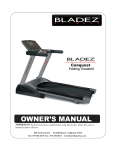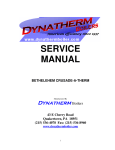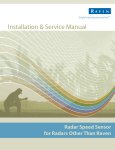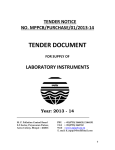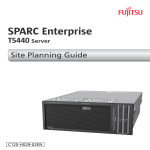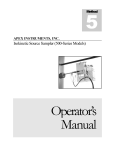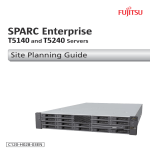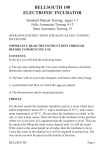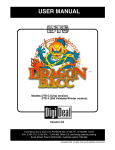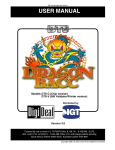Download Boiler Identifier Brochure
Transcript
MODEL IDENTIFICATION All DYNATHERM Boiler models are identified by a Serial Number (ex: 3421) usually with an alphabetical prefix (ex: FP3421). The following list defines the serial number notation for each model produced since 1945 for which parts are still available. Series 1945 1. Original two-pass DYNATHERM (discontinued in 1947), serial number with no prefix. Example: 3421. Series 1945 2. First three-pass DYNATHERM (belly type) 1947 to 1948, serial number prefixed with 0. Example: 03421. 3 Series 10 DYNATHERM (1948 to 1949), serial number prefixed with 10. Example: 103421 Call ACV DYNATHERM for parts for Series 10 boilers. RB 4. Revised belly type (1950 to 1964), serial number prefixed with RB. Example: RB3421. FP 5. FP Model (1965 to 1974), serial number prefixed with FP. Example: FP3421. CC 6. CC Model (1974 to 1976), serial number prefixed with CC. Example: CC3421. FPA 7. FPA Model (1976 to 1977) manufactured by ACV DYNATHERM, serial number prefixed with FPA. Example: FPA3421. FPB 8. FPB Model (1977 to 1988) manufactured by ACV DYNATHERM, serial number prefixed with FPB. First model using conventional retention head burners. Example: FPB3421. FPC 9. DYNATHERM FPC (1988 to 1990) manufactured by O’Brien Products, serial number without prefix. Example: 3421. FPC 10. DYNATHERM FPC (1991 to 1996) manufactured by O’Brien Products, serial number prefixed with C. Example: C3421. FPC 11. DYNATHERM FPC manufactured by DYNATHERM Boiler Mfg. (1996 to Present), serial number prefixed with C. Example: C3421 Remember, DYNATHERM operation is controlled in the combustion head and combustion chamber. The following points should be checked. 1. 2. 3. 4. 5. Proper nozzle properly positioned and set, taking into consideration the electrode setting. Orifice plate condition and relation to nozzle and electrodes. Liner and baffle arrangement in combustion chamber. Gaskets should be changed if hard or broken. DYNATHERM requires tight gaskets. If above are checked, C02 is set from 10-13% at the point of least smoke (never above 2 or 3), boiler and chimney clean, DYNATHERM will operate with no problems. Any boiler in operation over 10 years should be updated as noted herein or in any other area, particularly controls. Contact us for advice. 1 DYNATHERM INSTALLATIONS WITH ORIGINAL CAST IRON BURNER Introduction DYNATHERM is the finest oil-fired home-heating unit for hot water on the market today. It employs principles of combustion proven through more than 100 years of field experience, many of which are now being acclaimed as new developments. Practical field experience, as well as design engineering, has contributed to DYNATHERM’s development. Throughout the years, DYNATHERM has maintained its practice of keeping pace with progress in the domestic heating field. The list of DYNATHERM firsts is a long one, and other manufacturers of heating equipment are only now using many of the features that have been standard equipment on DYNATHERM for many years. While almost all of the changes are adaptable to all DYNATHERMs, our standardization program began in 1978 with the introduction of the Carlin Retention head burner. Therefore, these instructions will deal mainly with the DYNATHERMs manufactured since that year. It bears repeating that DYNATHERMs manufactured prior to our standardization program can be brought up to date. Thousands of DYNATHERMs, some installed as early as 1936, are performing at peak efficiency today because the people servicing them have kept abreast of changes and have applied these changes to the equipment. DYNATHERM is, without a doubt, the easiest oil-fired unit to set up for firing at peak efficiency, if all instructions are followed. First, it must be remembered that DYNATHERM is a positive pressure unit. It is this feature that makes possible DYNATHERM’s sometimes-unbelievable fuel economies. This positive pressure makes it imperative that all gasket seals on DYNATHERM be absolutely tight. Therefore, these seals should be checked whenever any gasket is disturbed. This is particularly true of the 1/2” cored rope gasket used to seal the end head or cleanout door. This gasket is required to be replaced every time the end head is opened for annual maintenance and cleaning. The other gaskets are not usually in need of annual replacement. However, after years of use, they should be “candled” occasionally to make sure they are sealed. Much grief can be eliminated if gaskets are replaced when there is no longer sufficient compression available. NEVER ATTEMPT TO SEAL DYNATHERM BY THE USE OF BOILER CEMENT OR SIMILAR COMPOUNDS! Any leakage of gaskets will cause products of combustion to be forced into the boiler room. If, for any reason, the burner end of the DYNATHERM is removed from the boiler, it is very important to be sure that the gasket sealing the front head to the primary combustion tube is replaced and tightly sealed. If it is not, a bypassing of the combustion air will occur and will dilute the gases and make it impossible to raise a good CO2. The effect of this gasket leaking can be detected when the CO2 remains at a low reading with the proper nozzle installed and shows no increase with an acceleration of pump pressure. Combustion Chamber Arrangement DYNATHERM’s clean operation depends on combustion taking place within a confined area. This is accomplished and controlled by use of various combinations of liner and baffle arrangements. The arrangements are shown for each model on the Liner and Baffle Arrangement drawing sheets. The most important item regarding the chambers is to be sure, when installing the cloverleaf or cone baffles used in RB, RP, CC, and FPA models, that the smaller diameter opening of the baffles is always toward the nozzle of the unit. Be sure that the liners and baffles are tightly pushed against each other and forward into the boiler against the burner end as shown on the drawings (Please see schematics in the back of this manual). Liners and baffles may crack after firing, but this will not affect operation of the unit, as it is required to allow for expansion and contraction. Liners and baffles should not be moved after firing unit, unless they are to be replaced. 2 Start-Up Before starting burner: 1) Check electrical connections. 2) Check oil connections to tank and pump. 3) See that the electrodes are properly positioned. The electrodes should be 3/8” below the center of the nozzle tip, and 1/16” forward of the face of the nozzle tip. The gap should be 3/16” wide. See that the electrodes are spaced 1/4” from any grounded metal. The face of the nozzle should be 1/4” behind the orifice plate in the combustion head as shown on drawing in back pages of this manual. Please refer to the drawings for “251SR Orifice Plate Assembly” and “Nozzle and Electrode Setting for DYNATHERM Combustion Head”. Models manufactured after December 15, 1977 (see burner manual provided). 4) Oil motor. The motors have sleeve bearings and are wick oiled. Fill the reservoir with high-grade spindle oil that will flow at low temperatures. 5) See that the proper fuel oil is in the tank. (The DYNATHERM has been approved to burn Commercial Standard #2 Fuel Oil. Heavier fuel is not recommended.) 6) Be sure the combustion control is in the starting position. 7) See that all joints of smoke pipe are sealed tightly and sealed to the chimney. 8) See that the system is fully supplied with water, as required. 9) Set room thermostat at a point slightly higher than room temperature. 10) See that the boiler control is in the “ON” position. 11) Open valve in fuel oil line. a) Gravity Feed Installation: To bleed the fuel unit on a single pipe system, remove the plug located in the side of the regulating valve chamber. With the fuel unit in operation, allow enough oil to drain out to purge the entire system of air. Catch the overflow in a suitable container. This same tapping is for use of the pressure gauge when setting the DYNATHERM for its proper C02 b) Sub-Gravity installations: These must have a return line from the fuel unit to the oil storage tank. In all other respects the starting instructions are the same as for gravity feed installations. 12) Close main switch and start the burner. Commercial Standard Cs75-76 The final adjustment should be made in compliance with the Commercial Standard CS75-76, which is as follows: Certificate Following installation of the boiler, certain test data should be obtained and recorded by the installer on the boiler certificate to be placed with each boiler installation. The test data shall cover the following points: C02 in flue gas by analysis, draft, stack temperature, firing rate and smoke. Requirements The standard requirements as approved by the industry are as follows: 1) C02 in flue gas by analysis should not be less than 10% for efficient operation. 3 2) Draft - the draft shall be in accordance with specifications in this installation manual. An automatic draft regulator or its equivalent is not required with DYNATHERM because of the positive draft feature. Adjustments Combustion Efficiency Oil Pressure, Etc. The DYNATHERM, by virtue of its construction, is distinctive in its operation. Positive pressure is generated throughout the combustion zone thus eliminating the necessity for ideal draft conditions - the so-called “chimney pull”- that most conventional types of burners depend upon. It is designed to operate at its maximum efficiency when producing its rated output with 10 to 12% C02 and a smoke reading of 2 or less on the Baccarat scale, in the combustion gas, and any other setting will result in increased stack temperature and lowered efficiency. For this reason, it is not possible to adjust the burner by observing the color or character of the flame. THE FLUE GASES MUST BE ANALYZED AND C02 CONTENT CHECKED. TO DO THIS, PROCEED AS FOLLOWS: Allow the burner to operate for about 10 minutes, then remove the pipe plug from the cleanout plate at lower left front head of boiler, or at elbow on Models #100 and #200. Insert the sampling tube of an Orsat and pump a representative sample of flue gas into the Orsat. Test for C02 content. If analysis shows less than 10% C02, increase the oil pressure until the correct reading is obtained. Increasing the oil pressure increases the C02 content, decreasing the oil pressure decreases the C02 content. Removing the cover over the adjusting screw and turning this screw can vary the oil pressure. To increase oil pressure, turn screw clockwise and to decrease oil pressure, turn screw counter-clockwise. Be sure to replace cover and gasket when adjustment is completed. When 10-12% C02 is obtained, the oil pressure should be in the range of 90 lbs. to 150 lbs. If it is necessary to exceed 150 psi to obtain C02 of 10-12%, the next larger size tips should be installed and pressure adjusted to obtain correct C02. The foregoing could occur when nozzle tips would deliver to burn a fixed amount of oil (with fixed air). It is occasionally necessary to follow this procedure. USE A PRESSURE GAUGE WHEN INCREASING OR DECREASING OIL PRESSURE. C02 Test Procedure The following is a step-by-step procedure to set up and test a DYNATHERM. ANY ATTEMPT TO FIRE AN ORIGINAL DYNATHERM INSTALLATION AFTER SERVICING WITHOUT THE USE OF A C02 KIT IS FUTILE AND CAN LEAD TO SERIOUS COMPLICATIONS. ALL WARRANTIES, GUARANTEES, AND RESPONSIBILITIES, WRITTEN OR IMPLIED BY DYNATHERM OR ANY OF ITS EMPLOYEES ARE VOID UNLESS SUCH TESTS HAVE BEEN TAKEN AND RECORDED FOR THE OWNER. 1) Be sure proper nozzle is installed. Note: See recommended nozzle list for boilers built after December 15, 1977. 2) Open end head or cleanout door. 3) Check for proper arrangement of liners and baffles on Models before 12/15/77. 4) All liners and baffles must be pushed tightly toward burner end. 5) If a scroll is used, position so as to clear all tubes and lay flat against the tube sheet. (NOTE: DYNATHERM Models 48/32,100,125,150 & 200 are not designed for use with a scroll.) 6) Check gasket for compressibility and change, if necessary. 7) Close end head, being careful not to displace scroll. 4 8) Pull up bolts evenly into snug position. 9) Start unit and check for leaks. Do not seal any gasket leaks with boiler cement! 10) Take CO2 reading. a) If between 10-12%, take a smoke reading. b) Unit should be set at the C02 reading where smoke is 2 or less on Baccarat Chart. Normally, this will occur at about 11 1/2% C02. c) To increase C02, increase oil pressure. The air supply is fixed on DYNATHERM. While this eliminates the necessity of air adjustment, the correct amount of oil introduced into the unit is necessary to obtain proper C02. If oil pressure exceeds 150 lbs. and C02 is not above 10%, replace nozzle with another of the same size, or next larger size. d) To decrease C02, reduce oil pressure. If oil pressure drops below 90 lbs. without obtaining proper C02, replace nozzle tip with another of the same size or next size smaller. Never change angle of spray on models built before December 15,1977. Consult burner manual for proper angle on boiler built after this date. e) DYNATHERMs normally produce proper C02 and smoke reading between 120 and 150 lbs. oil pressure. These are the only adjustments necessary to set DYNATHERMs for proper combustion. Please take time to do it properly. It will guarantee customer satisfaction and save you, as well as the customer, time and money. 11) Take stack temperature reading. 12) With the C02, smoke test, and stack temperature, the operating efficiency can be determined. should never operate at less than 80% efficiency. DYNATHERMs Instructions For Assembling Jacket Models 24-36-48-48/32 Fp, Cc, Fpa, Fpb 1965-1978 DYNATHERM boilers are shipped with the jacket in a separate carton. This is done to prevent damage to the jacket during shipment. Identify jacket components, using care not to mar the finish. Piece #1 - Left side panel. Lowers to the burner end of boiler. Piece #2 - Right side panel. Lowers to the burner end of boiler. Piece #3 -Top rear. Longest of the top section pieces. Covers the boiler end opposite the burner. Piece #4 -Top front. Short top section. These two sections join together prior to mounting on boiler. Piece #5 - Rear door panel attaches sides together. Piece #6 - Rear door - mounts over end head. Piece #7 - One bag with sheet metal screws. For final assembly, attach item #4 to item #3 using screw holes provided. Place on top of boiler. Arrange items #1 and #2 on respective sides making sure bottom is secure over mounting skid. Then install one screw on each side. Finally mount item #5 and #6 on each end, making sure bottom retainer slips over skid. 5 Servicing The owner looks to you for continuous, satisfactory operation. While a large percentage of service calls result from conditions not traceable to the DYNATHERM, when the unit is at fault the procedure given under installation and adjustment should be observed. In addition, your inspection should include examination and cleaning of the strainer, which is readily accessible in your fuel pump. Instead of attempting to clean a nozzle tip, we suggest that it be replaced. To change the nozzle tip, disconnect the ignition wires, open the union and remove the back plate. If, however, you attempt to clean the nozzle tip, proceed as follows: Remove the nozzle tip and with great care disassemble the parts and use clean paper for removing dirt or foreign matter. Be sure that light can be reflected from all bright surfaces. Do not, under any circumstances, insert anything into the nozzle hole harder than a soft wood toothpick. Anything harder will destroy its walls and ruin its atomization. Clean the nozzle strainer. Since the slightest speck of dirt within the nozzle will affect the flame, the cleaning must be thorough. Wash all parts in kerosene and reassemble. Nozzles Nozzles are very important components of DYNATHERM Models RB, FP, CC and FPA with original DYNATHERM cast iron burners. Only nozzles with a 30o H angle of spray should ever be used. Within a certain range, delivery rate is not too important since the requirement of obtaining the correct CO2 and smoke readings will determine the gph of the nozzle. For example, the Model 36 DYNATHERM is designed to operate at 1.4 gph and the standard tip furnished is a 1.35 gph. This shows that it may be necessary to increase pressures on the fuel unit to obtain the high CO2 required by DYNATHERM. Because of fuel oil variations, chimney pull and other factors, this may not always be true. Therefore, it is sometimes necessary to go to a higher gph (1.5 or 1.65) to reach the CO2 requirements. Very seldom is it necessary to go to a lower gph, although it is conceivable. The FPB models require a different angle. Please consult burner section for this information. Nozzle settings are important because DYNATHERM fires through a 1 1/4” opening in an orifice plate. The nozzle should be centered in this opening, 1/4” behind the back of this plate to prevent possibility of grounding the electrode to the plate. Grounding would occur if the electrode did not clear by 1/4”. This orifice is tapered to relieve this situation. If the nozzle is set more than 1/4” behind the plate, it is possible to cause oil impingement on the plate with resultant malfunctioning. Nozzles Prior To 12/15/77 It is very important that the proper nozzle size and spray angle be used with the DYNATHERM. The following sizes and spray angles must be used. NOTE: ALL NOZZLES ARE HOLLOW. HAGO NOZZLES ARE RECOMMENDED. #24 #36 #48 #48/32 1.10/30o 1.35/30o 1.65/30o 2.24/30o or or or or 1.25/30o 1.50/30o 2.00/30 o 2.50/30o #100 #125 #150 #200 3.00/30o 4.00/30o 5.00/30o 5.50/30o or or or or 3.25/30o 4.25/30o 6.25/30o 6.00/30o If other than 30 degree nozzles are used, the result will be carbon deposits in the nozzle chamber, which will cause unsatisfactory operation and safety shutdown. 6 Trouble Shooting 1) Burner will not start If the motor does not start, trip the safety switch button on the combustion control. If this fails to produce the desired results, follow the instructions in the control instruction pages, which will be found in the back of this manual. The Cad Cell Relay (R8185E) has two switching relays: the Load Relay whose function is to switch on the burner motor and transformer for ignition when there is a call for heat, and the smaller Sensitive Relay, which is the plastic covered one energized by the Cad Cell whenever the cell “sees” light. When this occurs, the system is under normal operating condition. If the Sensitive Relay is not energized on start, the system will enter safety condition and shutdown in approximately 30 seconds. Manual reset is required. If Relay is de-energized during operation, the unit will shut down almost immediately and restart. If flame is not sighted, control will lock out in approximately 30 seconds as above. Manual reset is required. One important point to remember at this point is that if the Cad Cell would be sighting light prior to Load Relay being energized, it will not allow the Load Relay to pull in. A flickering, low intensity flame or a loose socket will cause a chattering of the Sensitive Relay and eventual burnout. Be sure this is not happening. You can visually check this. 2) Service Procedure Check Power at Fuse Box (1) No Power (2) With Power b. With a Call for Heat (1) No power at terminals 1 & 2 (2) Power at terminals 1 & 2 and load relay will not pull in (3) Power at terminals I & 2 and load relay pulled in Service Procedure c. Proctectorelay Pulled In (1) No power at terminals 2 & 3 (2) Power at terminals 2 & 3 but motor won’t run d. Cad Cell Check Out for Low Voltage: Indicates (1) Blown fuse (2) Go to next step Open wire in line or low voltage controller, or ... Controller defective, or ... system out on Hi Limit, or ... System aquastat relay (or switching relay) defective. (2) Cad cell holding in “sensitive relay.” (Go to step D for Cad Cell checkout.) or Proctectorelay is defective (3) Go to next step Indicates (1) Defective Proctectorelay. (2) Open wire to oil burner motor, or ... Defective oil burner motor. With temperature satisfied remove one wire from “S” terminal. Touch wire to “S” terminal intermittently making and breaking the circuit (the small movement of the “Sensitive Relay” may be seen through its clear plastic dust cover) (1) “Sensitive Relay” pulls in and out (2) “Sensitive Relay” does not pull in and burner still will not start (1) Short in Cad Cell wires, or … Stray light getting to cell or … Defective cad cell (refer to Step E “Cad Cell Test”) (2) Return to step 2B 7 Service Procedure e. Cad Cell Test Indicates With temperature satisfied, remove Cad Cell wires from “S” terminals and start burner. When flame has been established, jumper “S” terminals to maintain flame during Cad Cell Test, ONLY. Attach Cad Cell leads to suitable Ohmmeter* (1) 400 - 900 Ohms (2) 900 - 1500 Ohms (3) Above 1500 Ohms With burner off, dark cell Ohm reading should be from 20,000 to 1,000,000 Ohms. If Ohmmeter indicates a shorted condition, remove cad cell from its socket. If the short disappears *In the event an Ohmmeter is not available, it is possible to check the “Sensitive Relay” by availing oneself of a 1500 Ohm resistor f. With a Call for Heat ... (1) Flame is established but Sensitive Relay” does not pull in (1) Cad Cell normal (2) Cad cell marginal check alignment. (3) Replace cad cell (1) Replace cad cell mount. Replace the Proctectorelay. (1) Open wire in Cad Cell circuit, or … Cad Cell not seated firmly in Its socket, or … Dirty fire caused by improper C02 and smoke setting, or ... Cad Cell view obstructed, or ... (Refer to Step “E”, Cad Cell Test.) Service Procedure To determine “pull-in” refer to Step D procedure. 1) If motor starts and “safety shut down” continues, the oil system should be rechecked for leaks or air traps. Check the fuel unit. If it is air-bound, remove pipe plug, allow air to escape, and then replace pipe plug when oil flows. 2) If the boiler water is hot enough and domestic hot water is still not satisfactory, the system could have some oil film that may have insulated the fins on the hot water coil. The coil has to be removed to make this determination. In cases where the domestic hot water has a high hardness level, the hot water coil could be insulated on the inside by a build-up of a hard white coating. This is a gradual process and it would not show up as a problem for several years. This can be corrected by flushing acid through the coil to remove the build-up. (Please consult your service man.) Cleaning (Please refer to Drawing 1001-2 in the back of this manual.) 1. Remove four (4) brass nuts holding end head (Piece #10). 2. Lower end head (Piece #10) on hinge to horizontal position. Be careful not to drop scroll (Piece # 42) if scroll is used. Remove scroll (Piece #42). 3. Clean small tubes (Pieces #3) with vacuum cleaner. If carbon has caked, It may be necessary to use a tube brush. 4. If there is any carbon in 8” combustion tube (Piece #4), clean out. 8 5. Examine liners (Pieces #5, 6, 7 & 8). If they are in good condition, do not move them. Note: All liners and baffles will develop cracks due to expansion and contraction. Unless they have been broken down, it is not necessary to change them. If they are to be replaced, be absolutely sure they are in proper alignment and pushed forward into flue connection casting (Piece #35) to protect casting. 6. Check condition of end head insert (Piece #11), clean glass (Piece #13). 7. Check gasket (Piece #47). It is always best to replace gaskets. 8. Remove cleanout cover (Piece #52) at burner end. Insert vacuum hose into bottom chamber and clean thoroughly. If combustion control is an old style relay (R1 17, R817, etc.), It would be mounted on cleanout cover (Piece #47). The relay should be cleaned around the helix. 9. Take down stacks, clean and check chimney. 10. Remove nozzle assembly, clean and check electrodes (Piece #29). Check nozzle assembly gasket (Piece #24), replace if torn, check nozzle tip, (Piece #19). Nozzles should not be replaced unless they are not working as they should. If you get proper C02 and smoke reading, nozzle tip is okay. 11. Check orifice (Piece # 17). If plate has small cracks, this is due to expansion and contraction. Plate is okay. If plate has large cracks and is warped, replace plate by removing combustion head (Piece # 16). 12. Check oil filter in oil line. Replace insert with new one. 13. Check rope gaskets (Piece #45) on flue connection (Piece #35). Replace if leaking. 14. Check coil gasket (Piece #53). Replace if leaking. A leaking gasket could be a critical oversight for the longevity of the boiler. 15. Place scroll (Piece #42) if used, over and around 2” boiler tube (Piece #3). Raise end head (Piece # 10) into place and install 4 brass nuts. Tighten nuts, making sure that rope gasket (Piece #47) is tight. If rope gasket is not tight, check if scroll (Piece #42) has not slipped off 2” boiler tubes. 16. Replace cleanout cover (Piece #52), making sure to seal with a new gasket. It is very important that all seals be tight as boiler is under pressure and if leaks occur, you will have smell and carbon around boiler. 17. Replace stack making sure joints are tight. All joints in stack should be secured with screws and tape wrapped around each joint. 18. Replace nozzle assembly making sure nozzle assembly gasket (Piece #24) is in good condition and in place. 19. Fire boiler and check C02 for proper setting (10% to 13%). Check smoke reading. Must be less than #2. 20. Check all gaskets and joints (while burner is running), making sure that there are no leaks. 21. Clean up around boiler and boiler room. 22. Normal cleaning does not require removal of flue connection (Piece #41). If, however, there is reason to remove flue connection, proceed as follows: Remove combustion head (Piece #16) held to flue connection by three 3/8” x 1” cap screws. It is always good to put shims under fan housing to hold at proper level. This will make it easy to reassemble. Push combustion chamber refractory to rear of boiler to clean flue connection. Remove four brass nuts holding flue connection to boiler. When putting flue connection back on boiler, make sure all gaskets are in place and tight. Return combustion chamber to proper place, making sure first liner enters flue connection. 9 Servicing Older Dynatherm Units For various reasons, DYNATHERM oil-fired heating units have been changed in design throughout the years. However, the changes made in no way effected the efficiency or the basic concept of DYNATHERM combustion. All DYNATHERM units, if brought up to date as recommended, would be just as efficient and dependable as those now being produced. 10 ALL DYNATHERM INSTALLATIONS Scroll And Cleanout Cover Models 18, 24, 36, 42 and 48 use a cast iron scroll held in position by the end head refractory insert. In some units a soft refractory has been substituted for the recommended hard refractory insert, which will not support the scroll. Wherever this is the case, it is strongly recommended that both a scroll and a hard refractory be installed in place of a soft refractory insert. One’s stack temperature can be reduced by as much as 100-150 degrees. In any event, when installing the scroll, it must be properly placed over the tubes or it will not be possible to attain a tight seal. The bevel edge on the inside diameter of the scroll allows for clearance fit over the 13 combustion tubes. We cannot emphasize enough the importance of a tight seal wherever gaskets are used. NEVER use boiler cement to seal a gasket joint and NEVER use a scroll on a unit equipped with a soft head insert. Chimney Chimney troubles often result in the heating unit being blamed unjustly for many complaints. Cracked tile and unlined chimneys lead to leakage of the products of combustion which, when combined with water vapors, mar the external sides of the chimney. Care should be taken to be certain that chimneys are clean of flyash or carbon. DYNATHERM, with its low stack temperature, will cause any deposits of these materials to fall down and block the escape of the products of combustion. This, of course, will cause a malfunction of the unit and result in dirty operation, requiring a complete cleaning of the unit. Fireplaces on the same flue section as the heating unit are sources of noise and vibration and, if possible, should be segregated. Many chimneys are placed with three-side exposure to the outside. DYNATHERM, with its low stack temperature, occasionally causes the water vapors to condense. If the chimney is in bad condition, unlined or unprotected from precipitation, this condensation will flow down the inside and, in some cases, down the outside of the chimney. This can be eliminated with the installation of an H-stack cap or other stack-capping devices similar to the Wigwam cap. In extreme cases, an opening to the chimney from the basement will tend to dry out chimneys. When this is applied on a DYNATHERM installation, care should be taken to install a barometric damper in the chimney proper and below the entrance of the DYNATHERM exhaust vent. Troubleshooting: While a low draft reading will not bother the operation of DYNATHERM, downdraft will cause erratic operation. Large trees near the chimney or failure to extend the chimney beyond the peak of the roof often causes downdraft and must be corrected. Careful examination of chimneys for the above-named defects will relieve the heating plant of being blamed for many customer complaints. Component Parts This general service discussion does not delve into problems of motors, transformers, fuel units, circulators, fuel tanks, etc., because their relatively small service problems are common to all 11 units and are normally rather simple to solve. However, at this point, it is important to make one particular point on controls. Never use any controls on DYNATHERM except those recommended in your Service Manual. These controls have special features required for DYNATHERM. Conventional controls on the market do not have these features. The purpose of the foregoing is to explain those points that are common only to DYNATHERM. We would like to emphasize that DYNATHERM is not a complicated machine, since we have reduced so many of the variables inherent in oil-fired equipment to their utmost simplicity. Many uninformed servicemen tend to over-service DYNATHERMs and to create problems that do not exist. For this reason, we have published this general DYNATHERM service manual. Thousands of DYNATHERMs installed and serviced as we recommend operate dependably and efficiently day-in and day-out without any serious service problems other than annual care. Letters in our files attest to this statement. Testing laboratories have been amazed at DYNATHERM’s dependability and economy and have expressed this fact to us. We work continually toward incorporating new ideas and advancements into DYNATHERM. Remember that DYNATHERM is designed to work at high CO2 readings and will do so at low smoke readings. Unlike the ordinary burner, when CO2 readings are low on DYNATHERM, the smoke readings will be high. This is important! DO NOT OVER-SERVICE! unit ready to be a valuable servant. DYNATHERM is a simple, uncomplicated heating When requesting information for service or parts, please provide the model number, if available. Boiler serial numbers stamped on the tube sheet directly above the coil opening on older models or above the burner on newer models will aid us in expediting your requests. Smoke Test C02 tests alone will not guarantee satisfactory and dependable operation. DYNATHERM, as well as any other oil-fired heating unit, must be set for a suitable smoke reading in conjunction with a good C02. It is quite obvious that a high C02 with a heavy smoke reading will produce not only inefficient operation but also irritating and expensive service calls. At this point it would be well to stress the fact that DYNATHERM, unlike the average conversion burner, will actually produce more smoke below 10% C02 than it will above 10% C02 with the ideal range normally being about 11 1/2% C02. For this reason we insist that DYNATHERMs be set for 10-12% C02 at the point of least smoke and never above 2 on the Baccarat scale. A sheet of smoke tests ranging from a 9% CO2 setting to an 11 % C02 setting graphically exhibits this point. Controls Carefully check the operation of all controls and make sure that they function properly. 12












